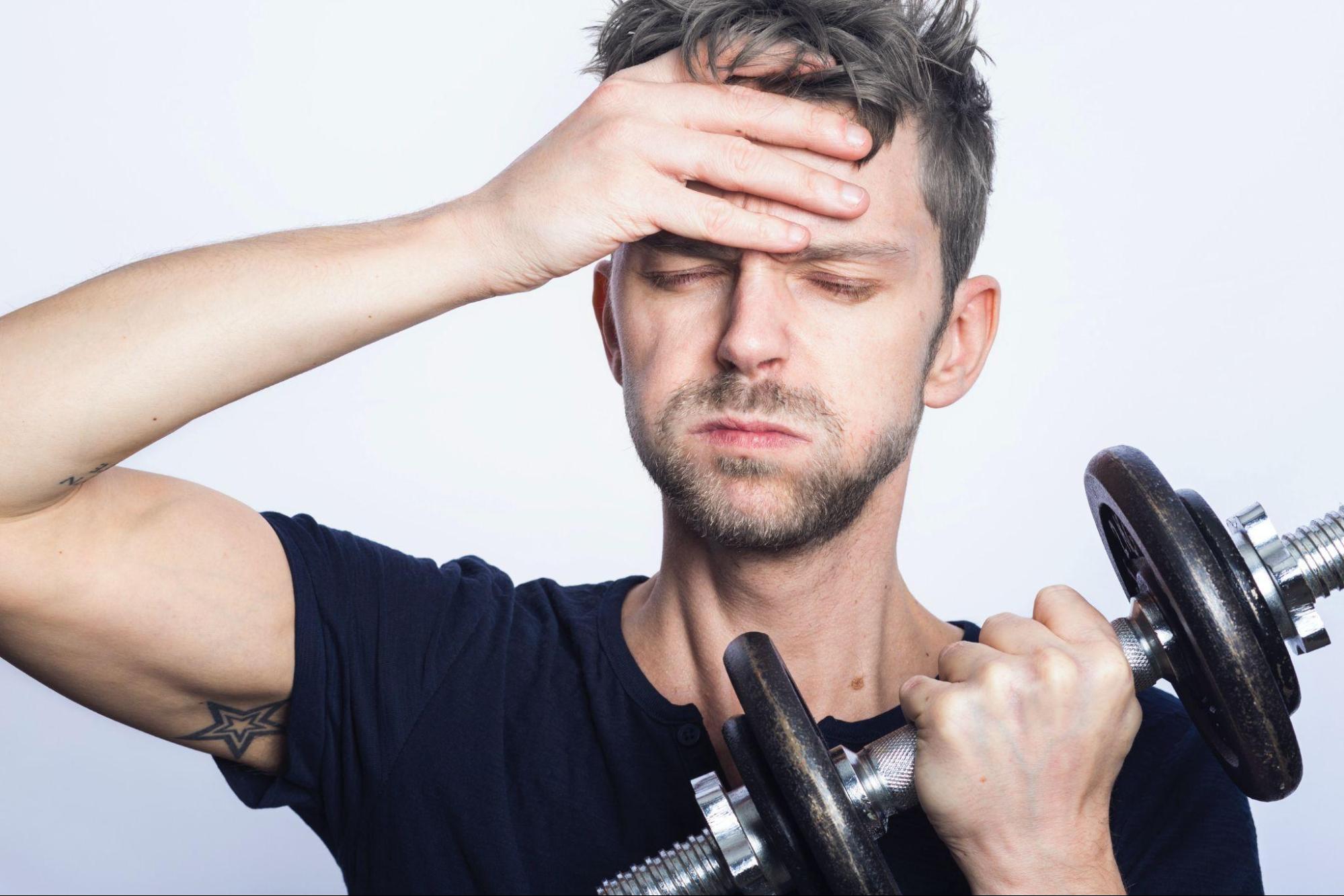In the world of sports and fitness, there's often a misconceived notion that "more is always better." Pushing oneself to the limit can sometimes be heralded as the hallmark of commitment and discipline. However, consistently exceeding these limits without adequate recovery can lead to a lesser-discussed, yet prevalent issue: overtraining. Overtraining syndrome can not only hamper athletic performance but also pose serious health risks, affecting both the physical and mental aspects of an individual.
Striking the right balance between rigorous exercise and sufficient recovery is an art and science, essential for achieving peak performance while preventing burnout and injuries. How can athletes and fitness enthusiasts recognize the signs of overtraining and implement strategies to ensure they're giving their bodies the recovery time they truly need? Continue reading to delve deeper into the intricate dance between exertion and rest, and how to optimize it for your benefit.
Related Link: Getting Rid of Armpit and Underarm Fat
Understanding Overtraining Syndrome (OTS)
Overtraining Syndrome, often abbreviated as OTS, is a physical and mental condition resulting from an imbalance in the exercise-to-recovery ratio. At its core, it manifests when an individual consistently pushes their body beyond its limits, without allocating sufficient time for restoration. Athletes, in their quest to improve, often intensify their training regimens. However, without adequate intervals of rest, this continuous exertion can lead to OTS, where instead of building strength and stamina, the body begins to wear down.
The symptoms of OTS aren't just physical; they can be psychological as well. Continuous training without proper recovery essentially defies the fundamental principle of athletic progression: training, followed by rest, leads to improvement. Ignoring this sequence and opting for an unyielding, relentless training schedule can have dire consequences, compromising both an athlete's performance and overall well-being. It's imperative to recognize the signs and take corrective measures before the situation exacerbates.
Identifying the Symptoms of Overtraining Syndrome (OTS)

Overtraining Syndrome is not just about feeling a bit more tired after an intense workout. It's about a relentless, overpowering exhaustion that can impair an athlete's overall performance and health. A quintessential athlete known for boundless energy might suddenly find it challenging to complete their regular training sessions. This inexplicable fatigue isn't limited to post-workout but can linger, persisting even on non-training days and during moments of relaxation, strongly hinting at the onset of OTS.
Beyond just fatigue, OTS manifests in several physical ways. Continuous muscle soreness even without recent exertion, a feeling of fatigue that just doesn't go away, a noticeable decline in performance metrics like speed, strength, and flexibility, and an elevated vulnerability to both injuries and common illnesses can all be indicative of this syndrome.
Want to enhance your gym performance with all-natural gummy supplements? Visit HUMBLEROOTS today!
The Emotional and Physiological Footprint of OTS
But OTS doesn’t stop at physical symptoms. It also carries with it a range of emotional and behavioral side effects. Mood swings, heightened irritability, symptoms of depression, altered sleep patterns, and significant changes in appetite (often leading to weight loss) can be linked to overtraining.
Scientific studies further unravel the physiological repercussions associated with OTS. The body's response to extreme training and insufficient rest can trigger an increase in cortisol, the "stress hormone". It also may lead to a spike in muscle breakdown products, which, in extreme cases, could evolve into rhabdomyolysis. This serious condition is marked by the rapid degeneration of skeletal muscle and the consequent release of myoglobin into the bloodstream, posing potential risks to kidney function. Moreover, athletes with OTS often show decreased testosterone levels, further affecting their performance and recovery.
Reversing the Effects of Overtraining Syndrome
The silver lining in the cloud of OTS is that its symptoms are treatable, and the recovery process is straightforward, provided no other complications have arisen. The two pillars of recuperation from OTS are adequate rest and proper hydration. By recognizing the signs early and implementing a balanced regimen of exercise and recovery, athletes can effectively mitigate the risks and effects of Overtraining Syndrome.
Guidelines for Coaches: Preventing Overtraining Syndrome
The onset of Overtraining Syndrome (OTS) can be insidious, but its effects can be detrimental to an athlete's performance and overall health. Prevention is always better than cure, and for coaches who are grooming high school athletes, this holds particularly true. Ensuring a balanced approach to training is crucial.
Monotonous training sessions can often lead to burnout and boredom. Instead, diversifying the training routine can keep athletes engaged, reducing the risk of overtraining. Another major pitfall is dramatically increasing training intensity or duration without giving the body time to adapt. Gradual progression in workouts is essential, allowing the body to efficiently adjust, train, and recuperate. Rest is not a sign of weakness; it's a cornerstone of effective training. Coaches should design training programs that integrate rest periods appropriately, possibly by alternating between high-intensity aerobic days and low-intensity, endurance-focused days.
Athlete’s Roadmap: Recognizing and Respecting Personal Limits
Self-awareness is key for athletes, especially those in high school who are still exploring the boundaries of their capabilities. One of the best tools for self-awareness is maintaining a personal training log. This should meticulously capture details about different training aspects - distances covered, number of repetitions, resting heart rate, and even maximum heart rate.
Self-evaluation goes hand in hand with self-awareness. Athletes should regularly rate the perceived intensity of their workouts and post-workout exhaustion on a scale of 1 to 10. This helps track any changes or trends in their training and recovery over time. Equally important is ensuring proper nutrition and hydration to fuel the body and assist in recovery.
Related Link: Lower Back Fat: How to Get Rid of It
Body Awareness: The First Line of Defense against Overtraining

The body is a sophisticated machine, and when treated well, it gives feedback. Every athlete must be attuned to their body's signals. Some red flags that might indicate overtraining or the risk of injury include excessive sweating beyond the usual, pushing oneself disproportionately harder than during a typical practice, skipping breaks, or experiencing unusual symptoms like weakness, dizziness, or sickness.
Being vigilant about these warning signs and making timely adjustments to training regimens can significantly reduce the risk of sports-related injuries like sprains, strains, and inflammations. Ultimately, the key to avoiding overtraining lies in a combination of structured training, self-awareness, and respecting the body's limits.
Interested in optimizing your workouts with all-natural performance and recovery gummies? Visit HUMBLEROOTS today!
Mastering the Balance for Athletic Excellence
Navigating the fine line between optimal training and overtraining is an art. Ensuring that you maintain this balance is crucial for both short-term performance and long-term health. While the ambition to push yourself harder is admirable, understanding that recovery is equally, if not more, vital can make the difference in an athlete's journey. The symbiotic relationship between exercise and recovery shapes an athlete's performance, health, and overall well-being.
For those seeking an edge in their recovery process, consider adding HUMBLEROOTS PERFORMANCE gummies to your regimen. Crafted with precision, these gummies offer essential nutrients that support swift recovery and prepare you for the next training session. Remember, peak performance isn't just about how hard you train, but how smartly you recover. Stay informed, stay balanced, and always prioritize your health.
Related Link: How to Lower Body Fat Percentage Easily



